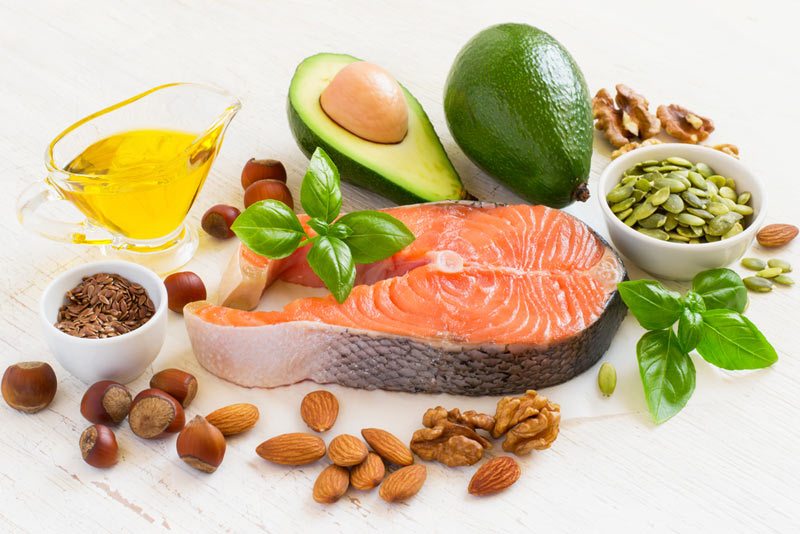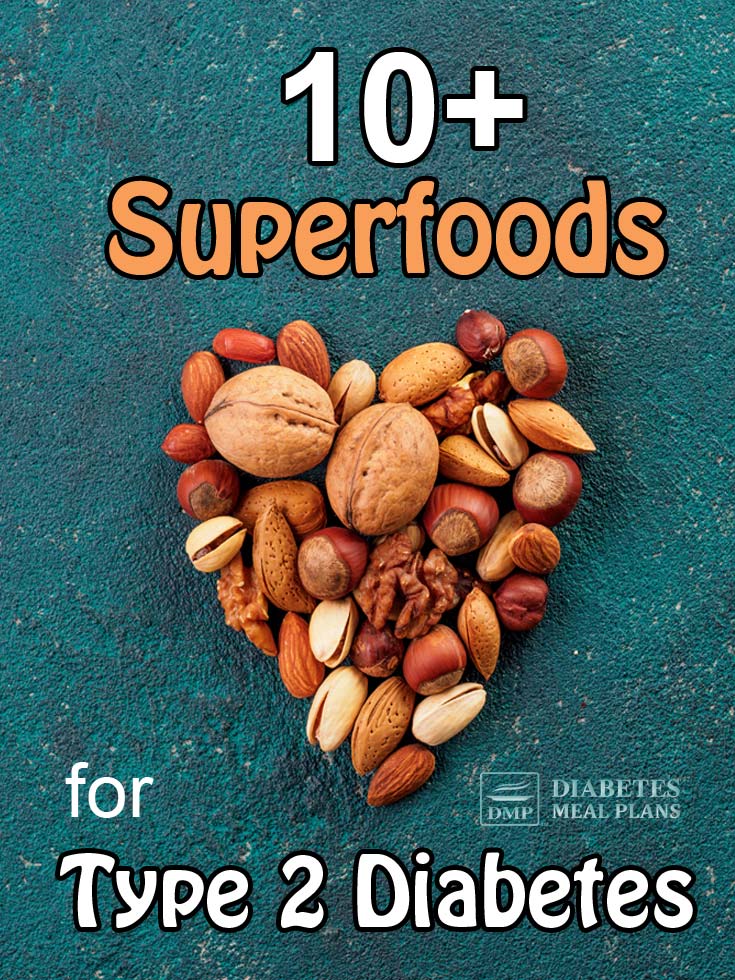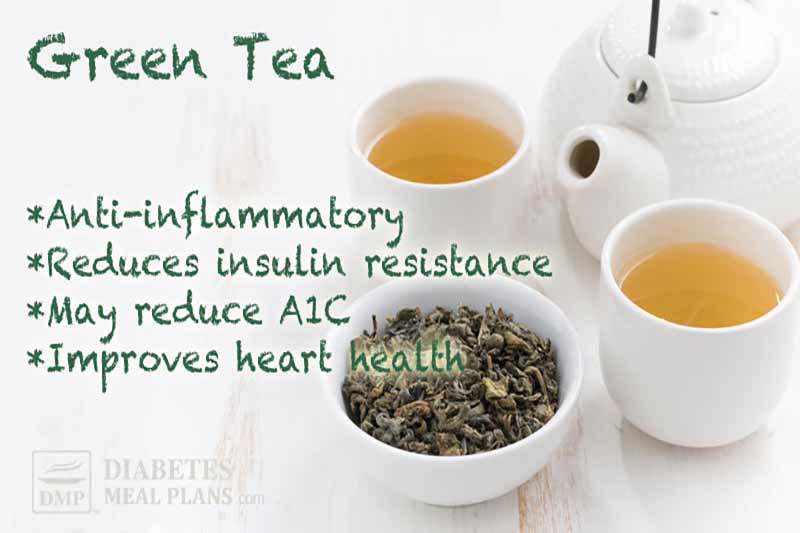You may have heard of all these miraculous superfoods for diabetes or prediabetes. But do they really hold some type of magic powers to help “reverse” your condition?
Surprisingly yes. However, before making any big promises, let’s first define what a superfood is.

What is a Superfood?
The term “superfood” has becomes somewhat of a buzzword and a marketing scheme these days. And while the term “superfood” can be abused, superfoods really do exist. And of course, consuming them on a regular basis can do wonders for your health!
So what exactly is a superfood?
A superfood is essentially any food that is naturally packed with valuable nutrient compounds that can improve your health and wellbeing.
And with an abundance of natural real foods available to us, superfoods are easy to find, and include in your everyday diet.
Healthy fats
Omega-3 fatty acids:
You may be familiar with the term “omega-3 fatty acids” because, in recent years, supplements like fish oil have become increasingly popular in the media.
But what are these omega-3 fatty acids and what role do they play in the body?
Firstly, our body needs fatty acids in order to create and maintain structures like cells, hormones, and even for optimal brain function!
Quite surprisingly, more than half the weight of our brain is made up of fat!
That means being frugal with fats is the quickest way to lose brain power and reduce your ability to think clearly. And it’s fats like omega-3 and monounsaturated fats that really do our brain a favor.
Omega-3 fatty acids are also famous for their ability to reduce inflammation in the body, which is great for anyone who is battling a chronic disease (yes that includes diabetes and prediabetes) and is looking to regain their stamina and vitality.
Additionally, scientific research has shown that omega-3s have the potential to prevent and even reverse insulin resistance.
Unlike some other fatty acids, omega-3s are an essential fatty acid. Being “essential” means your body cannot synthesize them on its own, therefore, you have to obtain it from food sources.
Foods that contain high levels of omega-3 fatty acids include:
- High quality fish oil
- Oily fish such as salmon, mackerel, tuna, anchovy, sardines and herring – most fish contains some omega-3
- Fish roe (caviar)
- Seafood such as mussels and oysters
- Flax seeds and flax seed oil
- Chia seeds
- Oils such as avocado, walnut, and macadamia
- Tree nuts such as walnut, pecans and hazelnuts
- Tahini – sesame seed paste

Monounsaturated fats:
Monounsaturated fats are plant fats that remain liquid at room temperature but begin to harden when placed in the refrigerator.
Good sources of monounsaturated fat include:
- Olive oil – always choose virgin
- Avocado oil
- Macadamia nut oil
- Nuts and seeds
In terms of heart-healthy fats, most research and health experts agree, monounsaturated provide the greatest benefits.
In the PREDIMED study, participants consumed a diet consisting of 41% fat with the inclusion of approximately 4 tablespoons of olive oil or a handful of nuts each day. The results showed a reduced risk of cardiovascular events by as much as 30% in high risk patients.
Why is monounsaturated fat so great?
Well, being that heart disease is an inflammatory condition, monounsaturated fats (especially olive oil) are known for their potent anti-inflammatory effects in the body.
Olive oil offers 36 different polyphenols, one of which is oleocanthal, a known anti-inflammatory agent that works on the same pathways as NSAID ibuprofen – but it’s natural!
For type 2 diabetes specifically, olive oil consumption has been shown to:
- Protect against pancreatic beta-cell dysfunction
- Improve insulin resistance
- Protect against diabetic retinopathy (eye problems)
- Improve glycemic control (blood sugar levels)
- Enhance glucose transport into cells
- Reverse saturated fatty acid-induced insulin resistance
- Assist in reducing A1c levels
- And improve cholesterol
Pretty impressive for an oil that’s easy to include in your everyday diet, right?
For prediabetes, researchers have found that a diet enriched in monounsaturated fat helps decrease liver fat and increase insulin sensitivity.
Pin, tweet or share, then keep reading. 😉

Fiber-Rich Foods
Dietary fiber forms the foundation of a healthy diet, or at least it should. Often though, people don’t get enough of it!
While adults need roughly 25 to 30 grams of fiber every day to maintain their digestion and overall health, most people fall short of that goal and only consume 10 to 15 grams per day!
Getting adequate fiber intake is especially important for people with type 2 diabetes and pre-diabetes because fiber slows the absorption of sugar/carbs from other foods, which results in more stable blood sugar levels.
Fiber also feeds the “good” bacteria in the gut, which in turn, improves the immune system and dampens inflammation that may be occurring throughout your body.
Here are some of the top sources of dietary fiber:
Flaxseed
Not only are flaxseeds rich in anti-inflammatory omega-3 fatty acids, but they are also an excellent source of dietary fiber!
Just one tablespoon of flaxseeds contains 1.9 grams of fiber along with 10% of your daily magnesium and vitamin B1 requirements.
Flax seeds have been shown to improve insulin resistance, lower fasting blood glucose levels, and reduce A1C levels.
Psyllium
Psyllium husks are a fantastic source of soluble fiber.
Soluble fiber helps:
- improve digestion
- lower cholesterol levels
- and assist with better blood sugar management
When taken with meals, psyllium husks may help to lower postprandial blood sugar levels and modulate inflammatory molecules that may be produced by carbohydrate consumption. It’s also been shown to help reduce overall daily blood sugar levels and A1c.
And, psyllium is an ingredient that can be used to make low carb breads, producing bread that’s full of fiber and friendly on blood sugar, too!
Chia seeds
Chia seeds are their own little superfood powerhouse. They are high in dietary fiber – just one tablespoon providing 3.8 grams of dietary fiber!
These tiny seeds also contain a range of micronutrients including:
- iron
- zinc
- magnesium
- manganese
- calcium
- vitamins A, B, C, and E
- and omega-3 fatty acids
Research has found chia seeds to be a powerful tool for lowering a person’s risk of cardiovascular events.
In fact, when researchers gave type 2 diabetics 37 g of chia per day, they had a reduction in systolic blood pressure (SBP) by 6.3 mmHg, and a reduction in hs-CRP (an inflammatory molecule linked to heart disease) of 40%!
Chia seeds also have an amazing ability to assist with insulin resistance and improve glucose tolerance, shown in both human and animal studies.
One study found that introducing a chia seed supplement to a group of insulin resistance rats produced a reduction in visceral fat (belly fat) around the organs, improved insulin resistance, and delayed the onset of high blood lipids.
Human studies have shown that chia seeds have the ability to convert glucose into a form that has a slower release, which results in more stable blood sugar and creates greater satisfaction after a meal, keeping you fuller longer.
Nuts & Non-starchy vegetables
Non-starchy vegetables and tree nuts are also excellent sources of dietary fiber!
Check out this fiber breakdown:
- Almonds (1 oz): 3.5g fiber
- Walnuts (1 oz): 1.5g
- Pecans (1 oz): 2.7g
- Macadamias (1 oz): 1.9g
- Spinach (100g): 2.2g
- Kale (100g): 2g
- Broccoli (100g): 2.6g
- Brussels sprouts (100g): 3.8g
And of course, vegetables and nuts have a lot more to offer…
Non-Starchy Vegetables and Leafy Greens
From the time you were young you’ve probably been told over and over again to “eat your veggies!”
And for good reason.
As we’ve already seen, non-starchy vegetables are full of fiber. And they are also rich in potent phytonutrients that can build your health and help you manage your diabetes.
But first things first, it is important to specify what types of vegetables we are talking about.
Starchy vegetables are higher in carbs. And for better blood sugar control, starchy vegetables should be avoided or minimized.
Starchy veggies include:
- corn
- potatoes
- sweet potatoes
- peas
On the other hand, non-starchy vegetables are low in carbohydrates, which make them ideal for people with type 2 diabetes and prediabetes.
Think of veggies that grow above the ground:
- tomato
- cucumber
- zucchini
- broccoli
- leafy greens (spinach, kale, lettuce, cabbage, etc)
- eggplant (aubergine)
- etc
These are all non-starchy veggies, which are bursting with nutrients!
The CDC ranks Chinese cabbage, chard, spinach and leaf lettuce as some of the top “powerhouse” vegetables, with nutrient density scores of 91.9, 89.2, 86.4 and 70.73, respectively. So make sure to eat these veggies in abundance!
You can (and should) load up your plate with these veggies as often as possible because they are ripe with health benefits.
For starters, research has shown that the more vegetables you eat on a regular basis, the more control you will have over your blood sugar.
For example, one study found that diabetic patients who consumed a daily vegetable intake of 200 grams or more, with at least 70 grams of green vegetables, had lower A1C and triglyceride levels.
Non-starchy vegetables are also packed with vitamin C, vitamin E, and beta carotene, all of which are antioxidants that combat free radical damage, protecting your cells and keeping you healthier.
Additionally, vegetables are high in phytonutrients called flavonoids, which contain powerful anti-inflammatory and antioxidant compounds that help boost health in many ways.
Eating more natural flavonoid-rich foods can:
- improve metabolic and cardiovascular health
- improve function of the blood vessels in the vascular system (or in other words, protect you from heart disease)
- assist with better blood sugar control
Green Tea

High in disease fighting compounds known as catechins and polyphenols, green tea is a remarkable superfood that can have a huge impact on your health.
Green teas’ potent catechins are super-antioxidants!
They reduce oxidative stress, scavenge reactive oxygen species (aka free radicals) and stop pro-oxidant enzymes, which also prevents DNA damage and reduces body-wide inflammation in your cells.
Green tea’s super-antioxidant power has even been shown to fight cancer – so obviously it’s going to help you!
Drinking green tea may:
- Reduce insulin resistance as it’s been shown to stimulate the GLUT4 transporter, which helps insulin get into the cells so your body can clear glucose out of the bloodstream.
- Promote weight loss and lower body fat
- Improve blood sugar control and lower A1C levels
- Decreases absorption of triglycerides and cholesterol
- Improves vascular function and heart health
Enjoying 2 to 3 cups of green tea per day may be just what the doctor ordered!
Nuts
Because nuts have a high fat content, there has been some debate over whether or not nuts are actually a health food.
But here’s the thing, the concept of a “low fat diet” is extremely outdated. Think of it more as a sales pitch from food manufacturers who were more interested in selling us packaged food with a long shelf life.
Yes, over the years that have past, multi-billion dollar food giants have driven many nutrition myths!
The thing is:
- Eating fat does not make you fat.
- Eating fat does not instantly lead to higher cholesterol.
- And eating fat is not “bad.”
In fact, as it turns out, all that fat is what makes nuts a superfood!
Almonds, for example, are high in monounsaturated fats that nourish your body and may assist with maintaining optimal body weight.
You see, almonds are notable for their ability to help control appetite. They make you feel more satisfied so you don’t have to snack on other foods all day long. And they’ve been shown to produce more stable blood sugar levels as a result.
Walnuts are high in dietary fiber (1.9 g per oz) and rich in polyunsaturated fats, which include those incredible anti-inflammatory omega-3 fatty acids we talked about earlier.
Then of course, there’s all the other great nuts to choose from:
- hazelnuts
- pecans
- cashews
- pistachio
- macadamia
- peanut
- Brazil nut
As a group, tree nuts have been shown to:
- lower triglyceride levels
- lower overall cholesterol levels
- lower LDL “bad” cholesterol
- lower fasting blood sugar levels
- promote better overall glycemic control
Let’s just say: healthy fats are back in style, and that’s a very a good thing. Not to mention, nuts also contain valuable protein and are jam packed with many vitamins and minerals, too.
So, go nuts and indulge in a handful of crunchy deliciousness on a regular basis!
The Wrap Up
Superfoods are real – they are simply foods that are naturally packed with valuable nutrient compounds that can improve your health and wellbeing.
And with an abundance of natural real foods available to us, superfoods are easy to find, and include in your everyday diet.
Next time you’re at the grocery store, head to the fresh food section and pack your cart with an abundance of colorful produce. Add a few packets of nuts and seeds to the mix. And grab some flax and psyllium to make a loaf of low carb bread.
With a diet filled with nature’s wonderful superfoods, your blood sugar and metabolism will be back on track before you know it.
And more importantly, you’ll be filled with energy and feeling great!

i have occasions where I wake up in the middle of the night with low blood sugar in the 50’s and 60’s. which creates the shakes, sweats and blurred or spotty vision. What do you recommend I eat/drink at that hour to bring my levels back up and go back to bed.
Hi Sheila, you should view this info on how to manage hypoglycemia. You should also talk to your doctor or healthcare team about this.
I always have high readings in the am. 140-150 range, but A1C is 5.2-5.8. I am classed as pre-diabetic and am not on any meds, watch what I eat. Can I lower my morning readings, if so how?
HI Dee, this info here may help: https://diabetesmealplans.com/326/why-is-blood-sugar-high-in-the-morning/
Some articles I read say ground flax is better than having flax seed. Your opinion please.
Both are beneficial. The flax seeds can pass through undigested but will still contribute fiber. The ground flax is great for use in baking or cereals.
My dad has been advised to lower his blood sugar, but he also follows a low oxalate diet to prevent kidney stones. This limits him as to what vegetables he can eat and he is advised to avoid nuts. Any suggestions on how to reconcile the two?
Focus on what he can have Susan! By eliminating high oxalate veggies and nuts, there are still plenty of food options available.
A lot of your bread recipes call for flax seed. Is there an alternative? Flax seed is considered estrogenic. Depending on what “expert” opinions you read, some say that anyone with estrogen receptor breast cancer should not eat flax seed products. Regardless of the difference of opinions I prefer to be safer than sorry. Thanks for your response.
Other low carb flours work perfectly as a replacement in most cases – almond and coconut for instance.